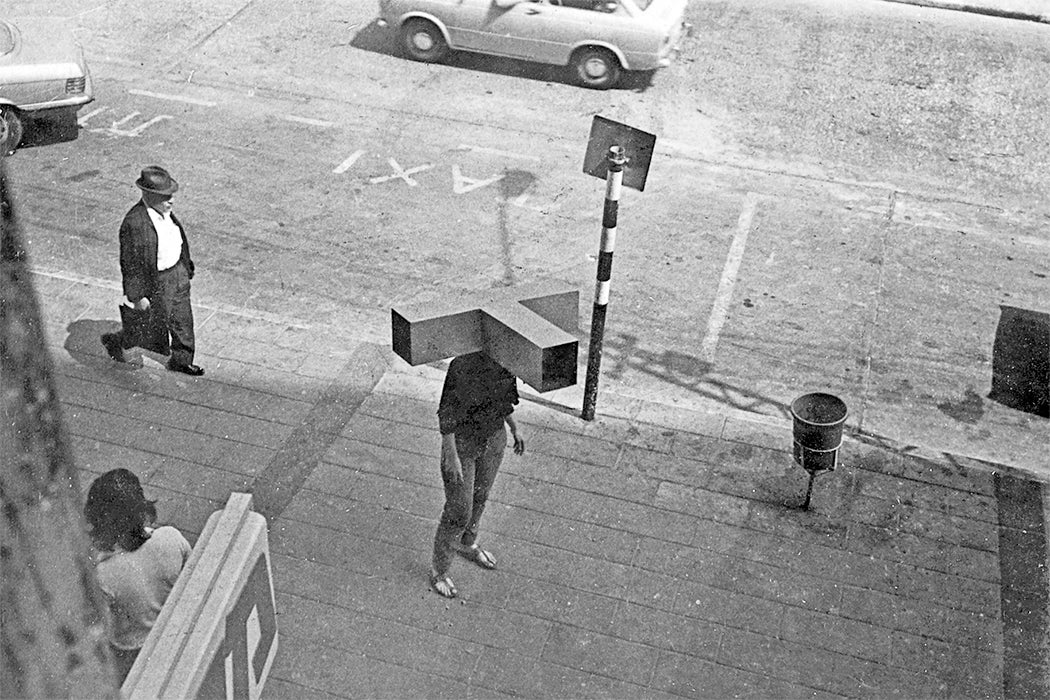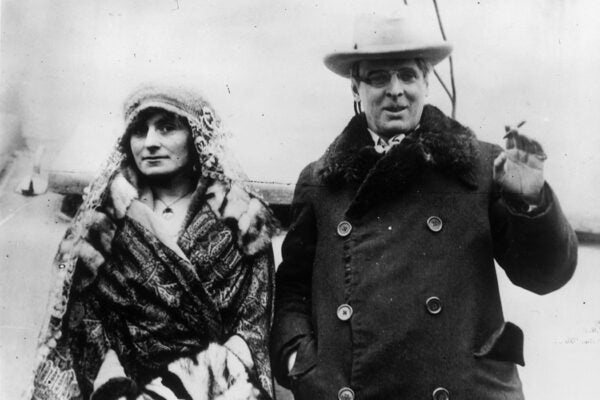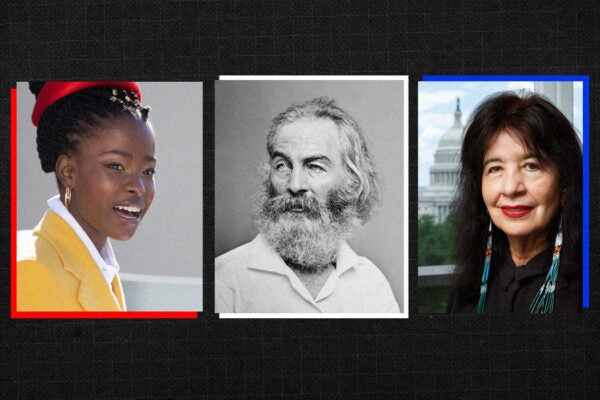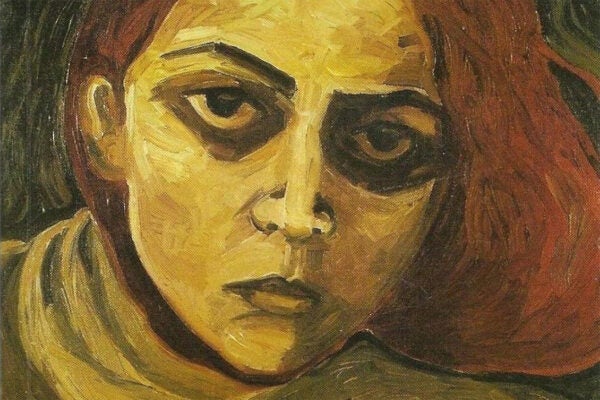In 1967, English artist Richard Long walked backwards and forwards in a Wiltshire field until a trail was pressed into the grass. Called “A Line Made by Walking,” this ephemeral piece was part of the performative art that emerged in the 1960s and ’70s. From American artist Vito Acconci pursuing strangers in 1969 New York for his “Following Piece,” to Polish artist Teresa Murak roaming 1974 Warsaw while shrouded in a smock sprouting cress seeds to merge the female body and nature, walking can be both a loss of control and a seizing of public space. It is an act of very individual wayfinding that’s guided by the existing landscape or city plan. Whether pilgrim or flâneur, explorer or migrant, the walker observes the world in a way that’s distinct from driving, biking, or running.
Wanderlust: Actions, Traces, Journeys 1967–2017, organized by the University at Buffalo Art Galleries and now at the Des Moines Art Center, chronicles half a century of movement in art. Its title references Rebecca Solnit’s book Wanderlust: A History of Walking, in which she wrote that walking “is a state in which the mind, body, and the world are aligned, as though they were three characters finally in conversation together.” Among the exhibition’s most recent works are Carmen Papalia’s 2017 “Blind Field Shuttle,” a participatory project created after the artist lost his sight, in which 50 people join him on urban and rural routes with their eyes closed, and Roberley Bell’s 2015 “Still Visible, After Gezi,” for which the artist returned to Istanbul following the Gezi Park demonstrations to rediscover the trees on her daily walks.
Writing on walking in contemporary art for Cultural Geographies, visual arts scholar Andrea Phillips states that while most works “have at some point been described as ‘public art,’” they all “intentionally or not, draw in ancient and modern mythologies of walking—from pilgrimages and diasporas to flâneurisms and derives—as part of their effect.”
Walking as an art has a deep history. Dadaist excursions in 1920s Paris followed in the footsteps of nineteenth-century French artists painting pedestrians after Baron Haussmann’s urban reconstruction that included new parks, squares, and boulevards. For The Art Bulletin, art historian Nancy Forgione writes that in “recording the altered look of the city, painters also aimed to depict the everyday practices through which human life renegotiated its relation to the city.… Its thematization in art focused not simply on the flâneur’s specialized stroll but on pedestrian activity as a wide-ranging modality of lived experience.”
In Ecumene, urban and cultural geographer David Pinder considers an audio-walk by Canadian artist Janet Cardiff called “The Missing Voice (Case Study B).” Participants walked East London while listening to 40 minutes of sound on a CD (the work is from 1999). Narrated by a woman’s voice, a fictional world with a film noir atmosphere was layered over real places in Whitechapel and Spitalfields. “It emphasizes the sensuousness of walking as a mode of apprehending the city that is tactile, aural and olfactory as well as visual,” Pinder writes. “It is an activity that enunciates and gives shape to urban spaces; one that is not localized but that ‘spatializes.’”
A sensory relationship with the city is not on every pedestrian’s mind as they commute, run errands, or just meander. And yet by stepping into the streets, walkers give themselves over to designed and serendipitous paths alike. By guiding participants, or their own bodies, on walks, artists encourage us to see the extraordinary in the mundane.







